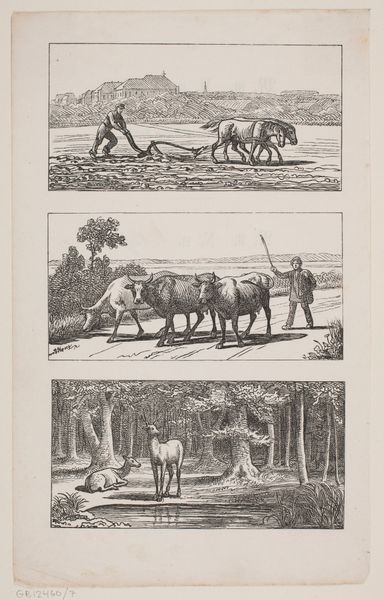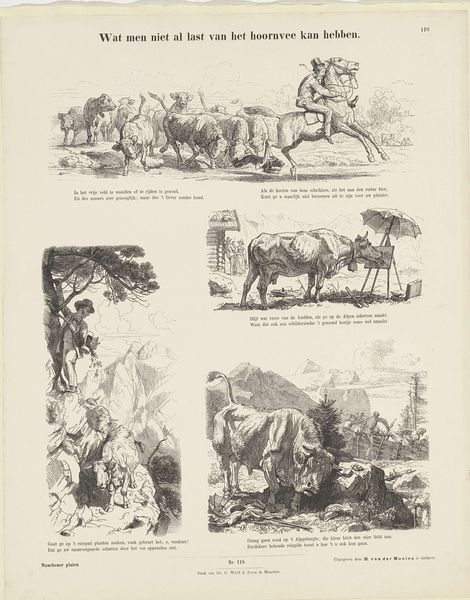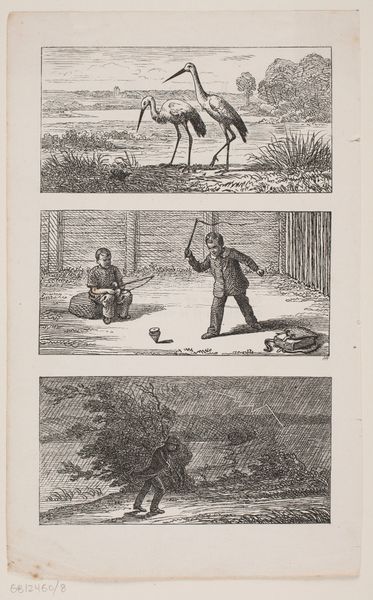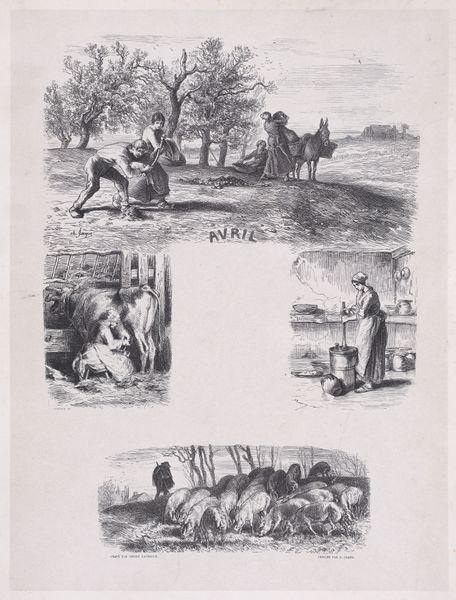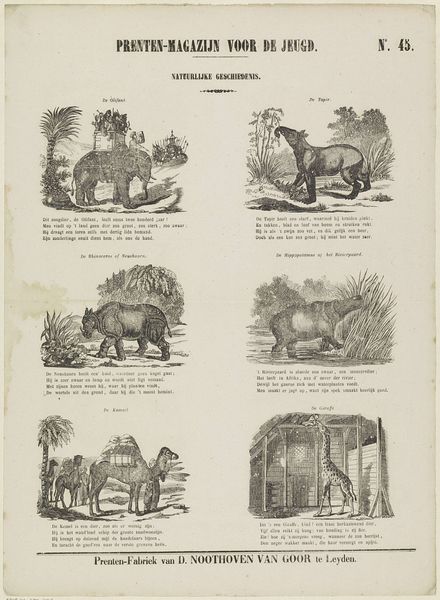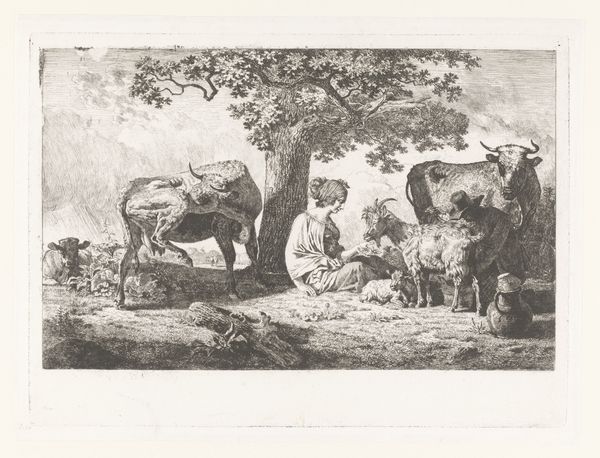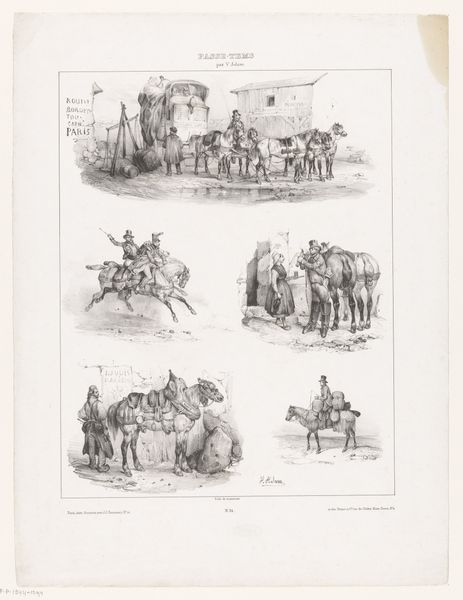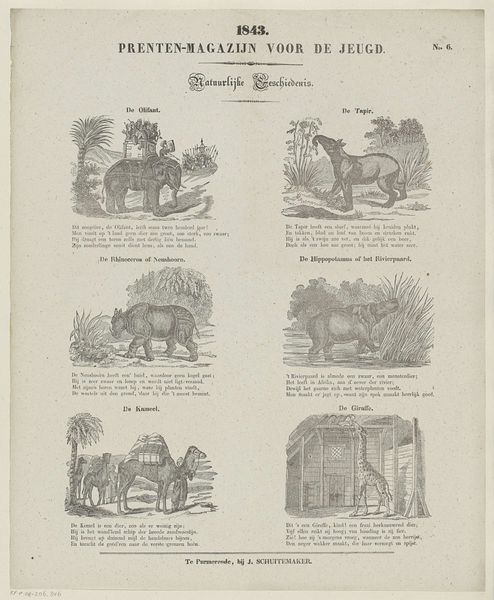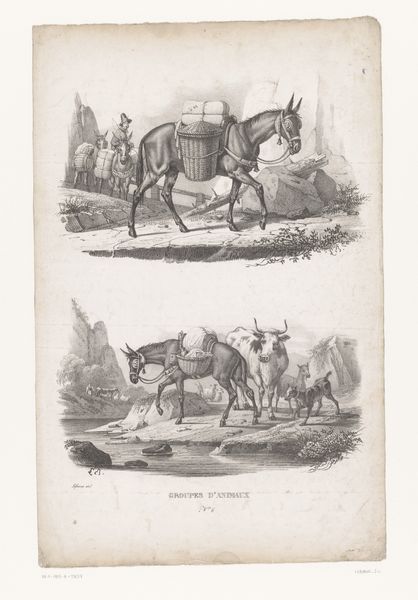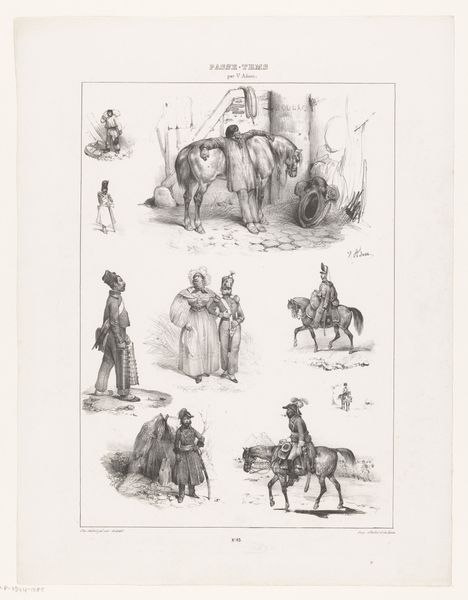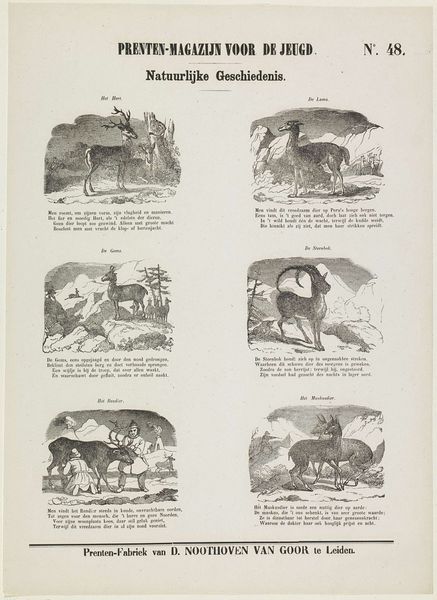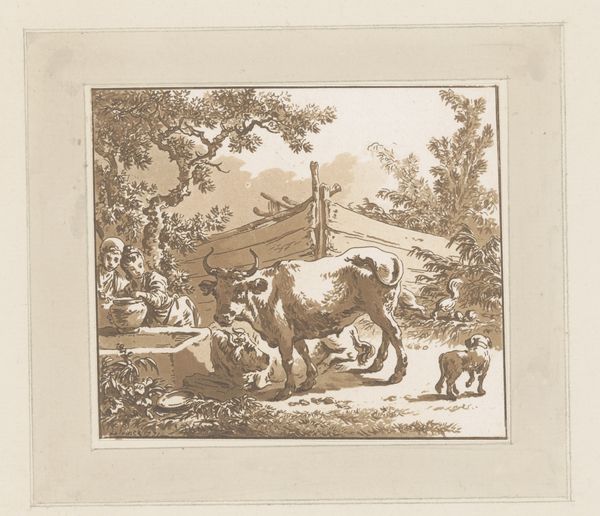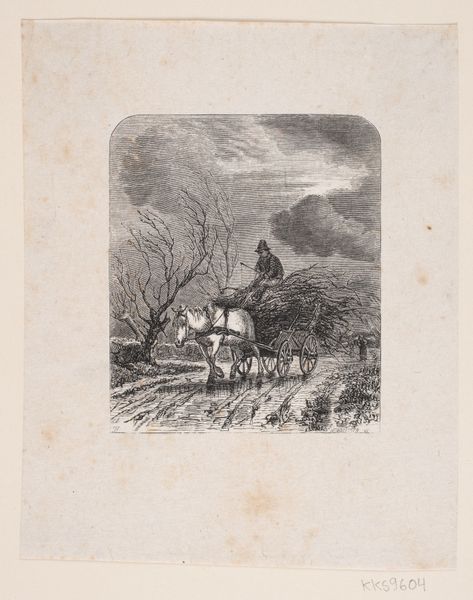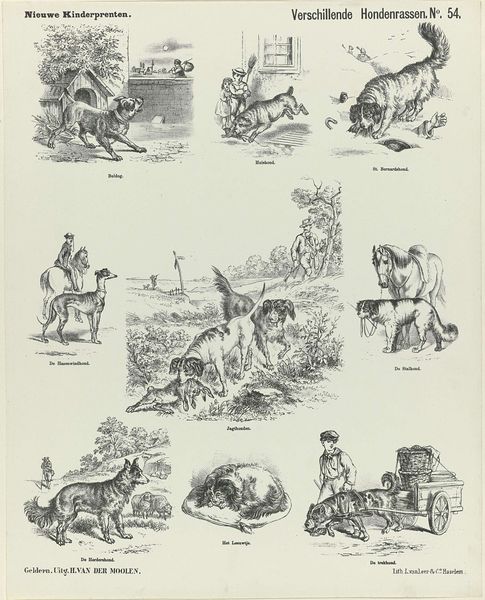
graphic-art, print, engraving
#
graphic-art
#
narrative-art
# print
#
genre-painting
#
history-painting
#
academic-art
#
engraving
Dimensions: 220 mm (height) x 137 mm (width) (bladmaal)
Editor: This is H.P. Hansen’s "Illustration til Chr. Winthers A.B.C." from 1863, a print made using engraving. I’m struck by how each panel feels like a snippet from a different story, almost like frames from separate silent films, each possessing a unique emotional register. What narrative threads do you see running through this piece? Curator: That's a perceptive observation. Looking at this engraving through a contemporary lens, I see an interesting intersection of narratives and power dynamics. Notice how the top panel, referencing the story of Moses, presents a scene of rescue and potential liberation, while the other two depict rural labor and a wild boar – images tied to notions of land, ownership, and perhaps even the taming of nature. Editor: So you're suggesting the images are loaded with symbolism linked to broader social issues of the time? Curator: Precisely. Think about 1863; it was a time of significant social upheaval and shifting power structures in Europe. Hansen's choice of imagery – a biblical story, a scene of rural labor, and a representation of untamed nature – could be interpreted as a commentary on themes of freedom, exploitation, and the relationship between humanity and the environment. How do you see gender and class operating within these panels? Editor: That’s interesting. The first panel features women as central figures. Does that impact your analysis? Curator: Absolutely! It's crucial to consider who is represented, and how. The presence of women saving Moses reframes the traditional narrative and highlights their agency, while the middle panel's scene of agricultural labor begs questions about class and access to resources. It pushes us to question whose stories are being told and whose are being omitted. Editor: This makes me rethink how these seemingly simple images engage with quite complex historical and cultural currents. Thank you for your time and explanation, it was enlightening. Curator: It was my pleasure, reflecting on the importance of continually re-evaluating historical narratives with contemporary sensitivities to fully understand the piece.
Comments
No comments
Be the first to comment and join the conversation on the ultimate creative platform.
